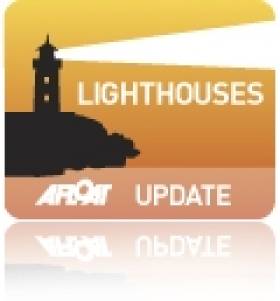Displaying items by tag: Irish Lights deploy SPAR
Finnish Baltic Sea 'Spar' Buoy Deployed On Irish Sea Trials
#BalticSPARbuoys – The first of two Finnish 'Spar' tube type buoys was deployed in the Irish Sea yesterday by the Commissioners of Irish Lights as part of a trial comparison programme of these buoys normally used in Baltic Sea ice-flow conditions, writes Jehan Ashmore.
As previously reported on Afloat.ie last May, CIL announced its association with a Finnish state-owned company Meritaito Ltd to carry out performance and survivability tests on the spar buoys at two Irish Sea stations. The trials are part of the Dublin Bay Digital Diamond Project.
The first station to be deployed a Spar Buoy was at the West Blackwater off Co. Wexford which involved the CIL's aids to navigation tender ILV Granuaile, recently returned from dry-dock following a spell in Cork Dockyard.
The slim profile of Spar buoys are particularly well suited to the Baltic's ice conditions, though they can suffer from conspicuity problems when compared with conventional buoys.
By deploying the Spar buoys, the Irish Sea trials will determine visible and radar conspicuity performance of the slimmer spar structures in comparison to the profile of the existing conventionally shaped buoys.
The trails are expected to run for 12 months and mariners are advised to maintain a safe distance from these buoys during the trial.
The Spar buoys are of the same light and daymark display as those of the existing Irish Sea buoys and will be established in close proximity to both of these stations.
According to the CIL website Notice to Mariners (No. 12 of 2014) the first Spar buoy is 300 metres to the east of the West Blackwater Buoy. The second Spar bouy will likewise be 300 metres but to the north of the Bennet Bank on the eastern fringes of Dublin Bay.
Deployment of the second Spar buoy at Bennet Bank is scheduled to be later this week or at the weekend depending on weather conditions.
To consult the Notice and charts showing Spar station sites, CLICK HERE.






























































